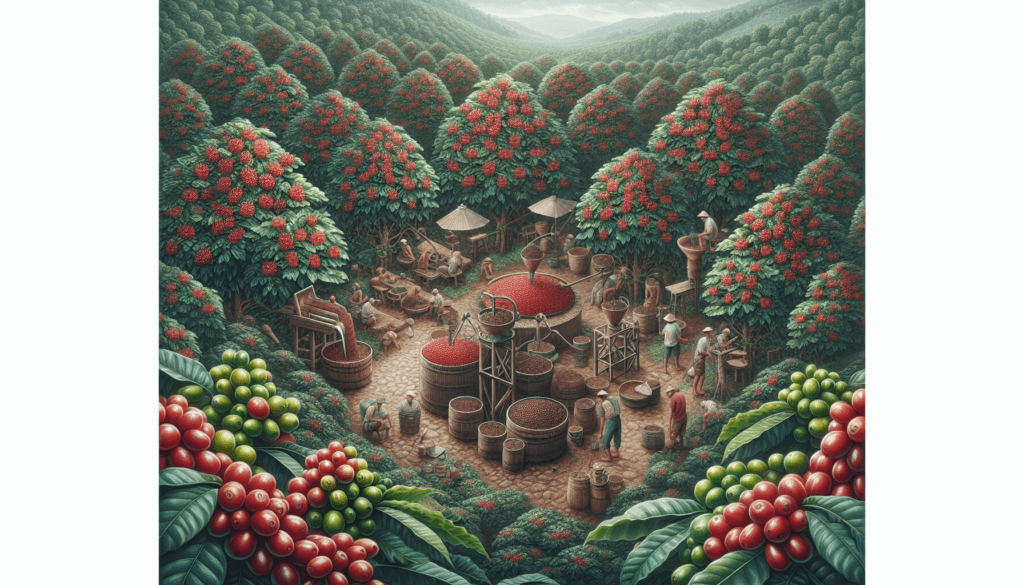Have you ever wondered about the plant behind your morning cup of coffee? Look no further, because this article explores the fascinating world of coffee plants and the specific species that are used to produce the beloved beverage. Delve into the origins and characteristics of the plant that brings us our daily dose of caffeine, and discover the various types of coffee beans that are cultivated worldwide. Get ready to embark on a journey of discovery as we uncover the plant that fuels our mornings and invigorates our senses.
What plant can you make coffee from?
Introduction to coffee plants
Coffee, one of the most beloved beverages in the world, is made from the seeds of several species of plants belonging to the Coffea genus. These plants, commonly referred to as coffee plants, are primarily cultivated for their beans, which are roasted and ground to make coffee. The process of turning coffee plants into the delightful beverage we all enjoy involves careful cultivation, harvesting, and processing.
Types of coffee plants
There are several types of coffee plants, each with its own unique characteristics and flavor profiles. The most commonly known coffee plant species include Arabica, Robusta, Liberica, and Excelsa. Let’s dive into the details of each one.

Arabica coffee plant
Arabica coffee (Coffea arabica) is by far the most popular and widely consumed type of coffee worldwide. Originating from the highlands of Ethiopia, Arabica plants are known for their delicate taste and complex flavors. They produce coffee beans that have lower caffeine content and higher acidity, resulting in a more aromatic and rich cup of coffee. Arabica plants thrive in higher altitudes and require specific growing conditions, making them more challenging to cultivate.
Robusta coffee plant
Robusta coffee (Coffea canephora) is the second-most popular coffee plant species and is predominantly grown in Africa, Asia, and Brazil. Robusta plants are known for their robust nature and ability to withstand harsh climates and disease. The coffee beans produced by Robusta plants have a higher caffeine content and lower acidity, resulting in a more bitter and full-bodied coffee. This variety is often used in espresso blends to add a strong and intense flavor.

Liberica coffee plant
Liberica coffee (Coffea liberica) is a lesser-known coffee plant species that originated in West Africa. Liberica plants are unique in their appearance, with larger leaves and cherries compared to other coffee plants. The coffee beans produced by Liberica plants have a distinctively bold and smoky flavor, making them a favorite among coffee enthusiasts looking for something different. However, Liberica plants are susceptible to various diseases and are less commonly cultivated today.
Excelsa coffee plant
Excelsa coffee (Coffea excelsa) is a rare and lesser-known coffee plant species that grows primarily in Southeast Asia. Although it was once classified as a separate species, Excelsa is now considered a variety of the Liberica coffee plant. Excelsa beans often have a tangy and fruity flavor profile, offering a unique taste experience for coffee aficionados. However, due to its limited cultivation and availability, it is less commonly found in the mainstream coffee market.

Other coffee plant varieties
Apart from the well-known Arabica, Robusta, Liberica, and Excelsa coffee plants, there are other less common coffee plant varieties that contribute to the diverse world of coffee. Some of these varieties include Maragogype, Pacamara, and Geisha. These varieties are often cherished for their exceptional flavors and unique characteristics, catering to the preferences of different coffee connoisseurs.
Geographical distribution of coffee plants
Coffee plants are primarily cultivated in regions known as the “Coffee Belt” or the “Bean Belt,” which spans across the equatorial regions between the Tropics of Cancer and Capricorn. This region includes countries such as Brazil, Vietnam, Colombia, Ethiopia, and Indonesia, among others. The specific climate and geographic conditions, including altitude, rainfall, temperature, and soil composition, greatly influence the quality and flavor of the coffee produced.

Coffee cultivation and processing
Cultivating coffee plants requires precise attention to detail and specific agricultural practices. The plants are typically grown from seeds in nurseries before being transplanted to fields or plantations. Coffee plants thrive in shaded environments and require sufficient rainfall and well-drained soil to flourish. Additionally, pest and disease management play a crucial role in ensuring healthy coffee plantations.
Once the coffee plants bear fruits, known as coffee cherries, they undergo a selective harvesting process. This involves hand-picking the ripe cherries, as only the fully mature beans yield the optimal flavor. After harvesting, the coffee beans must be processed to remove the outer layers of the cherries and the mucilage that surrounds them. The processing method can greatly influence the final flavor profile of the coffee beans and can involve either a dry (natural) or wet (washed) process.
Harvesting and processing coffee beans
After harvesting, coffee farmers employ various methods to process the coffee beans. In the dry or natural process, the cherries are laid out to dry in the sun until the moisture content reduces. The dried cherries are then mechanically hulled to reveal the coffee beans inside. This process is often used for producing coffee with unique fruity and wine-like flavors.
Alternatively, the wet process, also known as the washed process, involves removing the outer layers of the cherries immediately after harvest. The cherries are pulped to separate the beans and then fermented for a specific period to break down any remaining mucilage. Finally, the beans are thoroughly washed and dried. This method is commonly used for producing coffee with a cleaner and brighter flavor.
Once the coffee beans are processed and dried, they are sorted, graded, and roasted to bring out their distinct flavors. It is during the roasting process that the natural sugars and acids within the beans undergo chemical reactions, resulting in the familiar aroma and taste of coffee. The roasted coffee beans can then be ground and brewed to create a delectable cup of coffee.
In conclusion, coffee plants, namely Arabica, Robusta, Liberica, and Excelsa, are the primary sources for the coffee enjoyed globally. Each plant variety possesses unique characteristics and flavor profiles that contribute to the diverse and rich world of coffee. Through careful cultivation, harvesting, and processing, coffee farmers are able to bring us the delightful beverage we all cherish every morning or throughout the day. So, the next time you take a sip of your favorite brew, know that it all began with a coffee plant!



